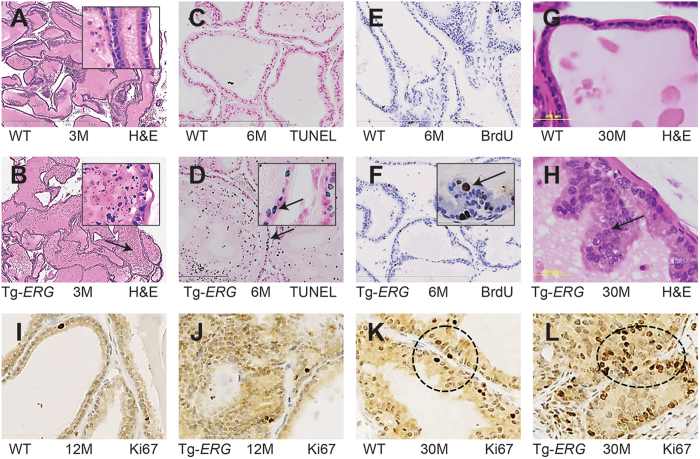Taduru L Sreenath
Taduru L Sreenath
1Center for Prostate Disease Research, USU Walter Reed Department of Surgery, Uniformed Services University of the Health Sciences, Bethesda, MD USA
1,✉,
Shiela S Macalindong
Shiela S Macalindong
1Center for Prostate Disease Research, USU Walter Reed Department of Surgery, Uniformed Services University of the Health Sciences, Bethesda, MD USA
1,
Natallia Mikhalkevich
Natallia Mikhalkevich
1Center for Prostate Disease Research, USU Walter Reed Department of Surgery, Uniformed Services University of the Health Sciences, Bethesda, MD USA
1,
Shashwat Sharad
Shashwat Sharad
1Center for Prostate Disease Research, USU Walter Reed Department of Surgery, Uniformed Services University of the Health Sciences, Bethesda, MD USA
1,
Ahmed Mohamed
Ahmed Mohamed
1Center for Prostate Disease Research, USU Walter Reed Department of Surgery, Uniformed Services University of the Health Sciences, Bethesda, MD USA
1,
Denise Young
Denise Young
1Center for Prostate Disease Research, USU Walter Reed Department of Surgery, Uniformed Services University of the Health Sciences, Bethesda, MD USA
1,
Talaibek Borbiev
Talaibek Borbiev
1Center for Prostate Disease Research, USU Walter Reed Department of Surgery, Uniformed Services University of the Health Sciences, Bethesda, MD USA
1,
Charles Xavier
Charles Xavier
1Center for Prostate Disease Research, USU Walter Reed Department of Surgery, Uniformed Services University of the Health Sciences, Bethesda, MD USA
1,
Rishita Gupta
Rishita Gupta
1Center for Prostate Disease Research, USU Walter Reed Department of Surgery, Uniformed Services University of the Health Sciences, Bethesda, MD USA
1,
Muhammad Jamal
Muhammad Jamal
1Center for Prostate Disease Research, USU Walter Reed Department of Surgery, Uniformed Services University of the Health Sciences, Bethesda, MD USA
1,
Kevin Babcock
Kevin Babcock
1Center for Prostate Disease Research, USU Walter Reed Department of Surgery, Uniformed Services University of the Health Sciences, Bethesda, MD USA
1,
Shyh-Han Tan
Shyh-Han Tan
1Center for Prostate Disease Research, USU Walter Reed Department of Surgery, Uniformed Services University of the Health Sciences, Bethesda, MD USA
1,
Marja T Nevalainen
Marja T Nevalainen
2MCW Cancer Center, Medical College of Wisconsin, Milwaukee, WI USA
2,
Albert Dobi
Albert Dobi
1Center for Prostate Disease Research, USU Walter Reed Department of Surgery, Uniformed Services University of the Health Sciences, Bethesda, MD USA
1,
Gyorgy Petrovics
Gyorgy Petrovics
1Center for Prostate Disease Research, USU Walter Reed Department of Surgery, Uniformed Services University of the Health Sciences, Bethesda, MD USA
1,
Isabell A Sesterhenn
Isabell A Sesterhenn
3Department of Genitourinary Pathology, Joint Pathology Center, Silver Spring, MD USA
3,
Inger L Rosner
Inger L Rosner
1Center for Prostate Disease Research, USU Walter Reed Department of Surgery, Uniformed Services University of the Health Sciences, Bethesda, MD USA
6Urology Services, Walter Reed National Military Medical Center, Bethesda, MD USA
1,6,
Charles J Bieberich
Charles J Bieberich
4Department of Biological Sciences, University of Maryland Baltimore County, Baltimore, MD USA
4,
Peter Nelson
Peter Nelson
5Division of Human Biology, Fred Hutchinson Cancer Research Center, Seattle, WA USA
5,
Valeri Vasioukhin
Valeri Vasioukhin
5Division of Human Biology, Fred Hutchinson Cancer Research Center, Seattle, WA USA
5,
Shiv Srivastava
Shiv Srivastava
1Center for Prostate Disease Research, USU Walter Reed Department of Surgery, Uniformed Services University of the Health Sciences, Bethesda, MD USA
1,✉
1Center for Prostate Disease Research, USU Walter Reed Department of Surgery, Uniformed Services University of the Health Sciences, Bethesda, MD USA
2MCW Cancer Center, Medical College of Wisconsin, Milwaukee, WI USA
3Department of Genitourinary Pathology, Joint Pathology Center, Silver Spring, MD USA
4Department of Biological Sciences, University of Maryland Baltimore County, Baltimore, MD USA
5Division of Human Biology, Fred Hutchinson Cancer Research Center, Seattle, WA USA
6Urology Services, Walter Reed National Military Medical Center, Bethesda, MD USA
© The Author(s) 2017
Open Access This article is licensed under a Creative Commons Attribution 4.0 International License, which permits use, sharing, adaptation, distribution and reproduction in any medium or format, as long as you give appropriate credit to the original author(s) and the source, provide a link to the Creative Commons license, and indicate if changes were made. The images or other third party material in this article are included in the article’s Creative Commons license, unless indicated otherwise in a credit line to the material. If material is not included in the article’s Creative Commons license and your intended use is not permitted by statutory regulation or exceeds the permitted use, you will need to obtain permission directly from the copyright holder. To view a copy of this license, visit http://creativecommons.org/licenses/by/4.0/.



